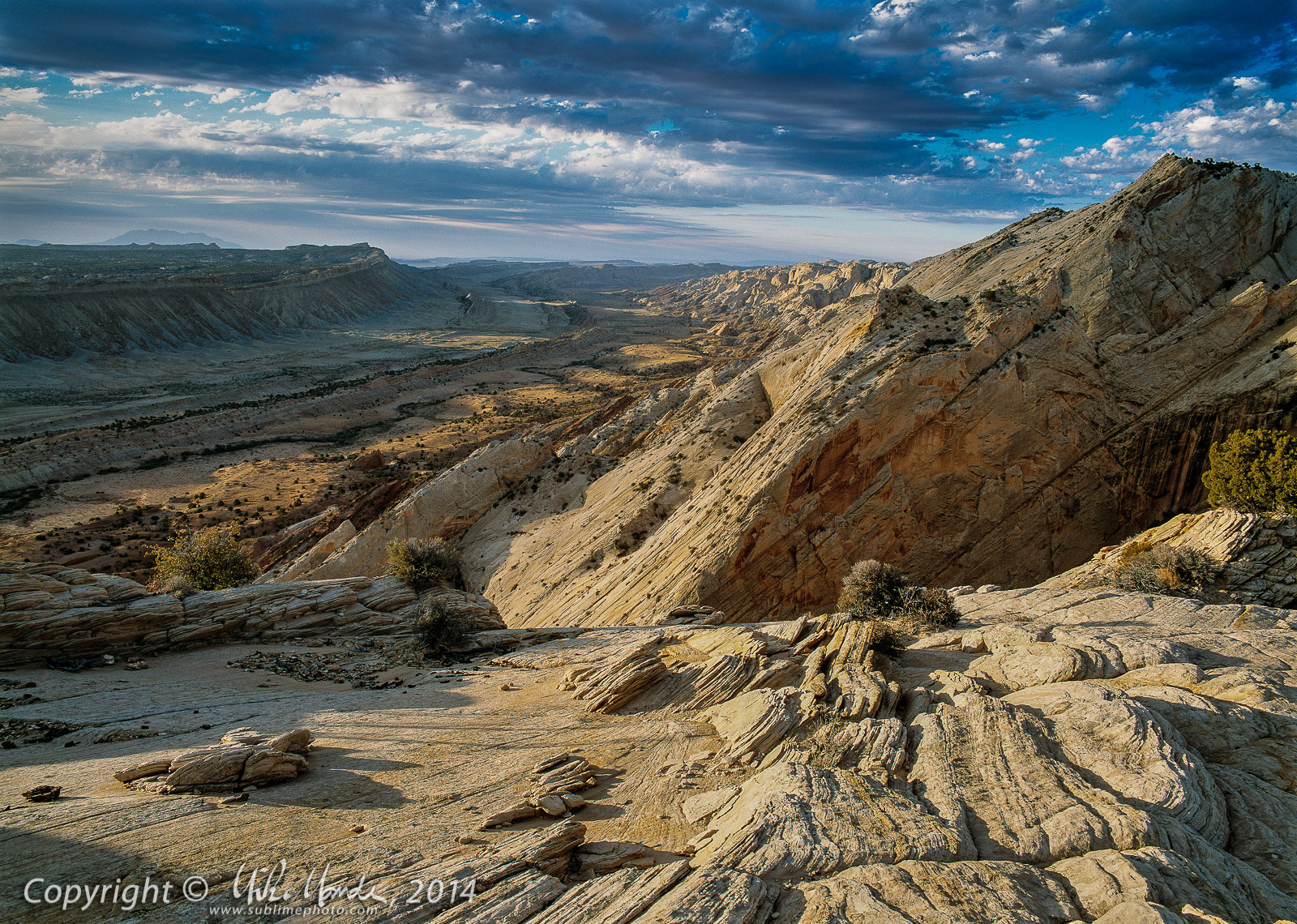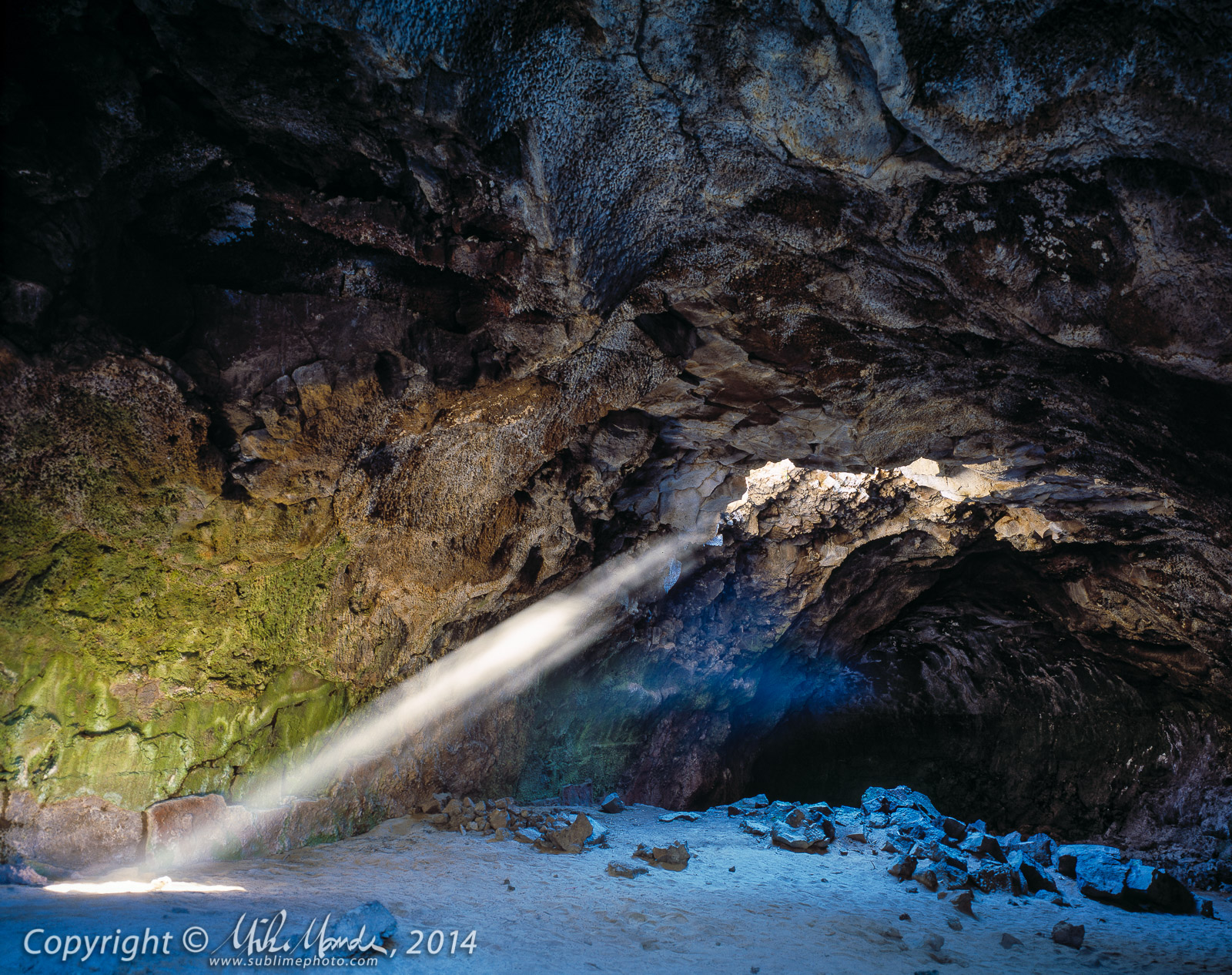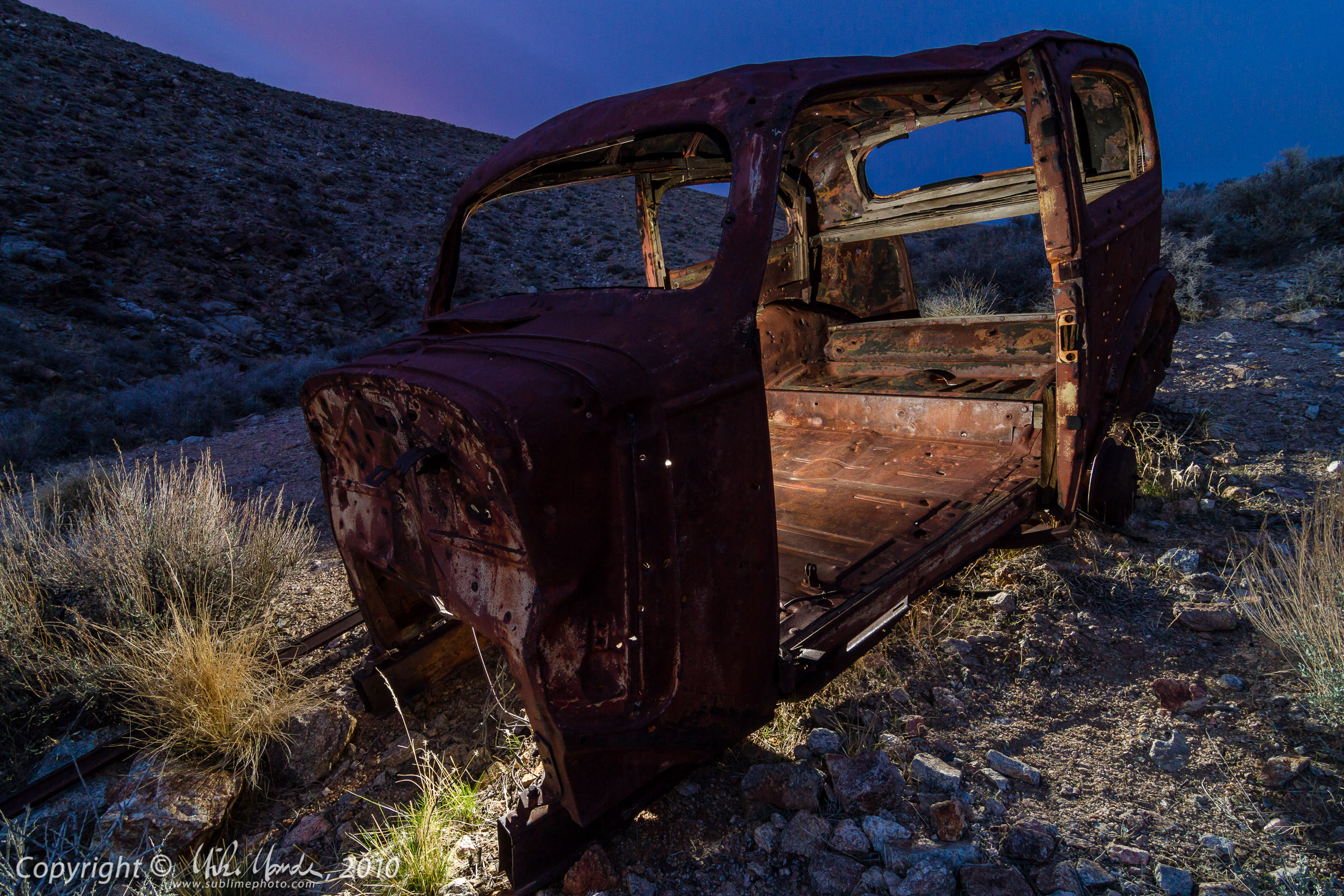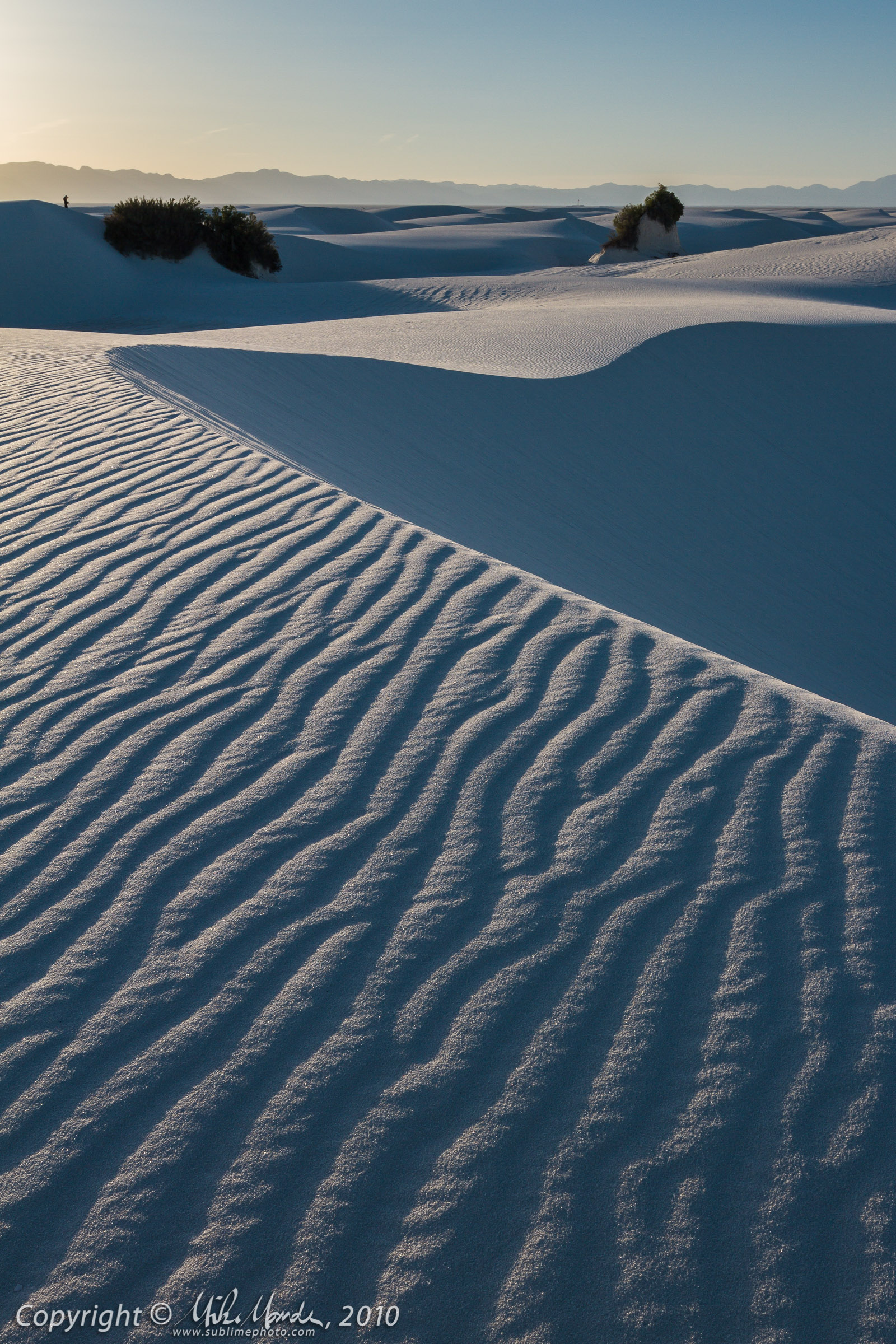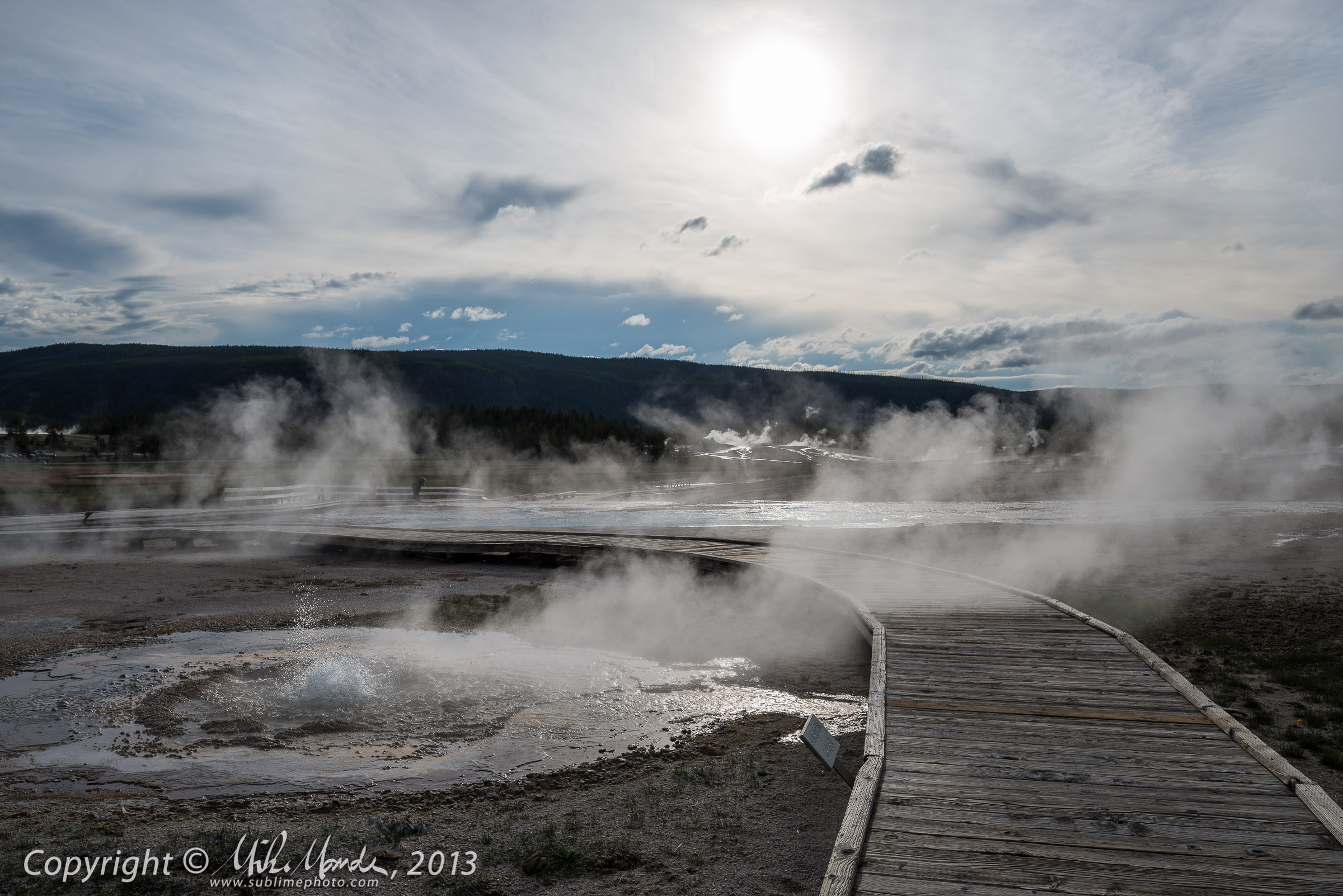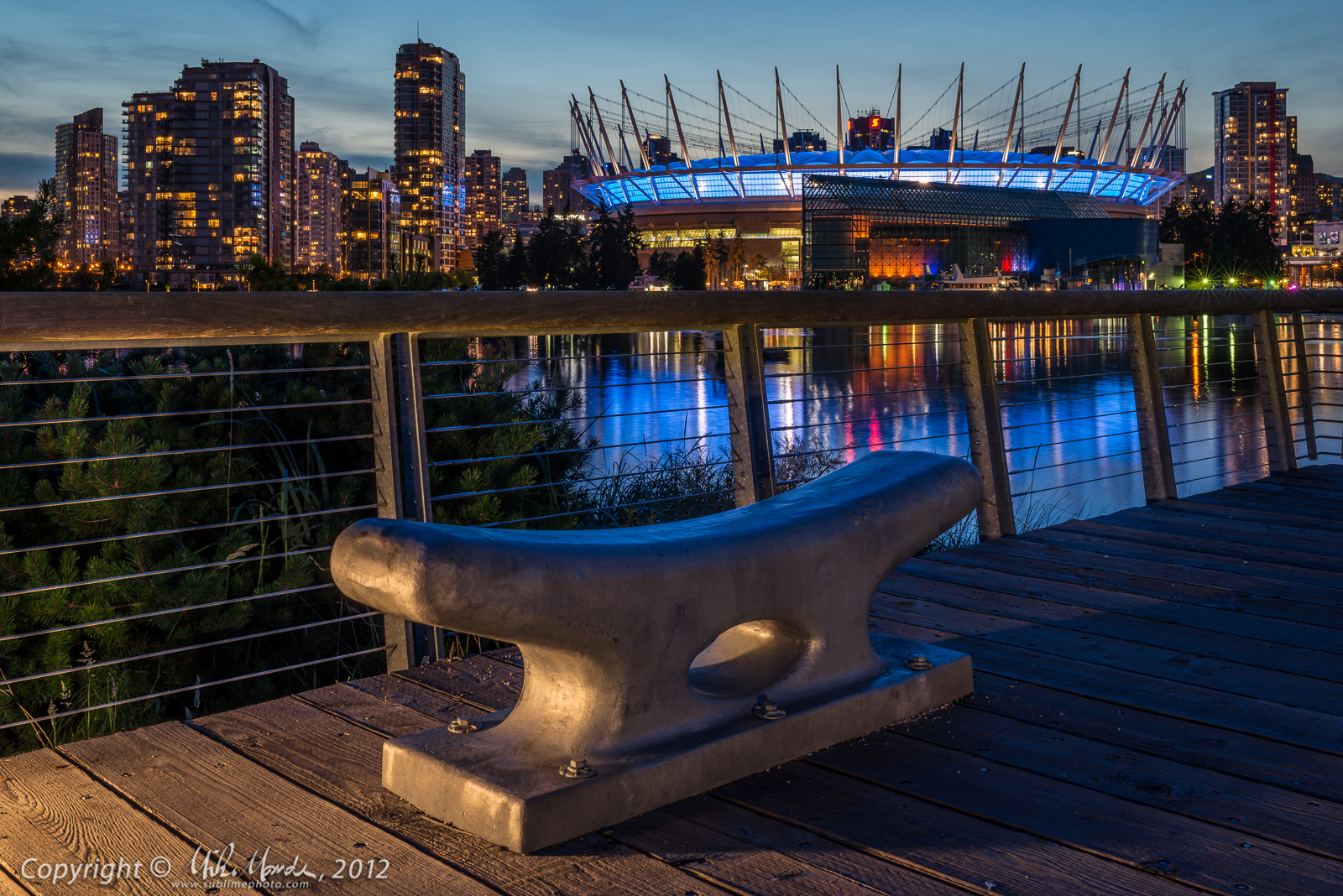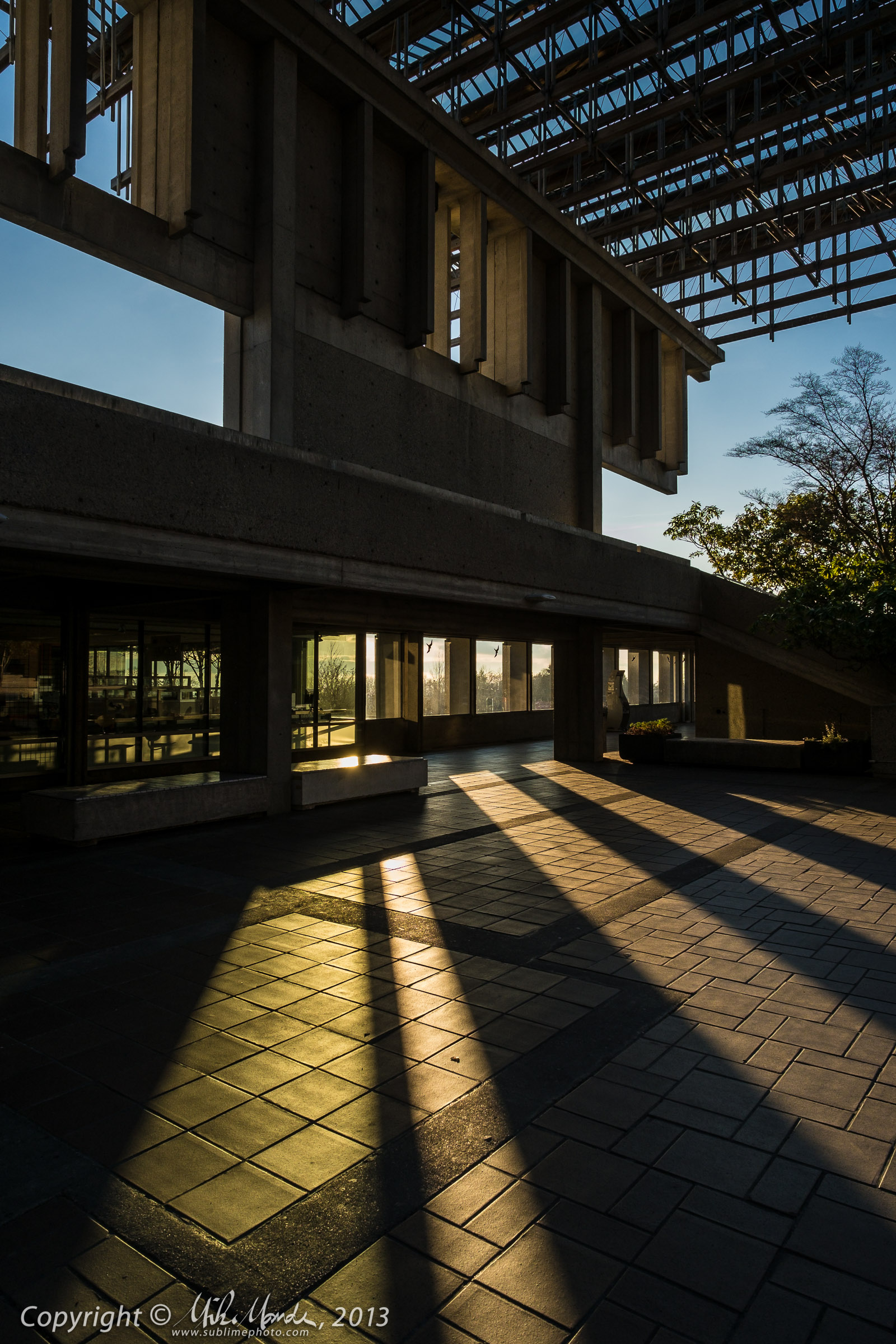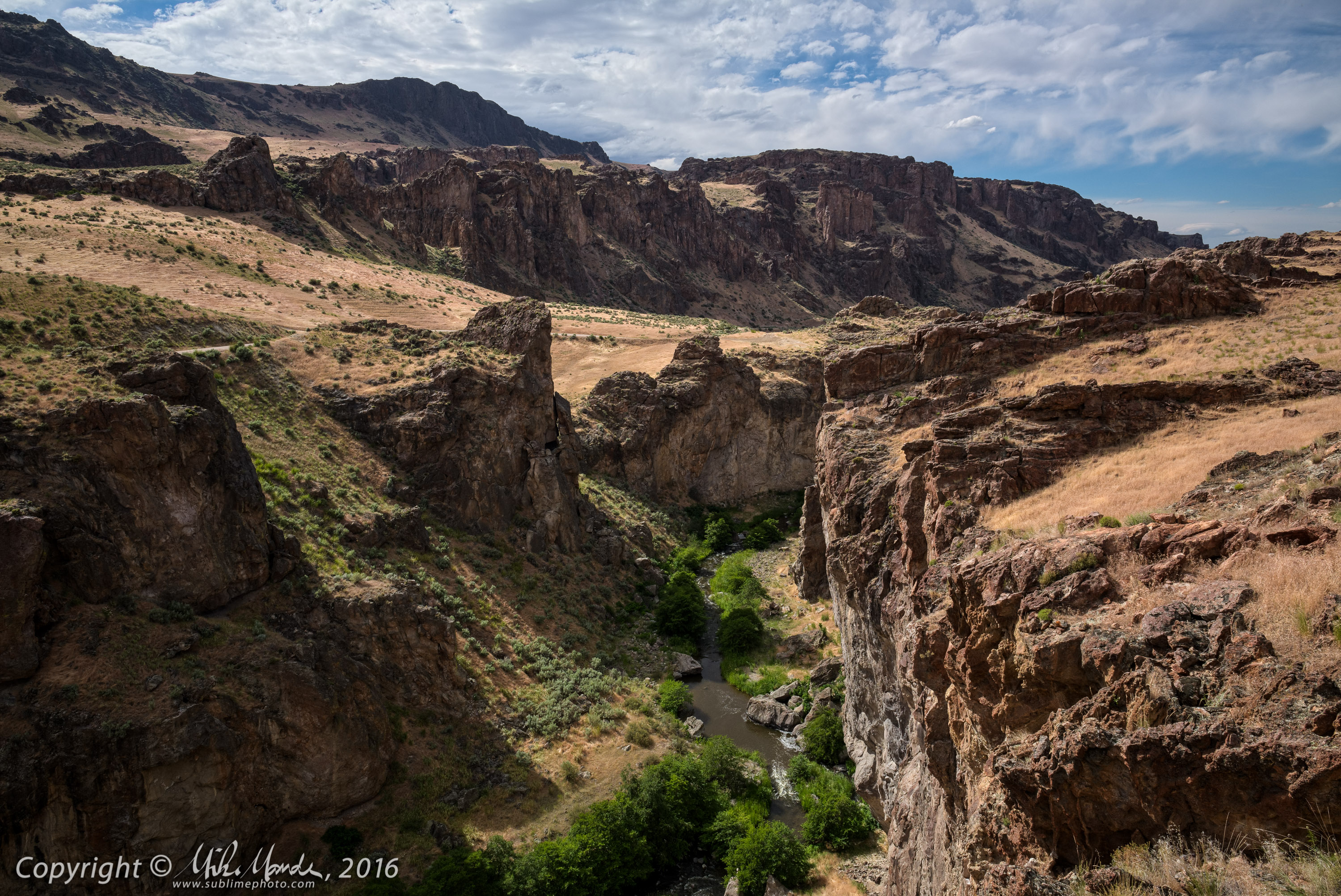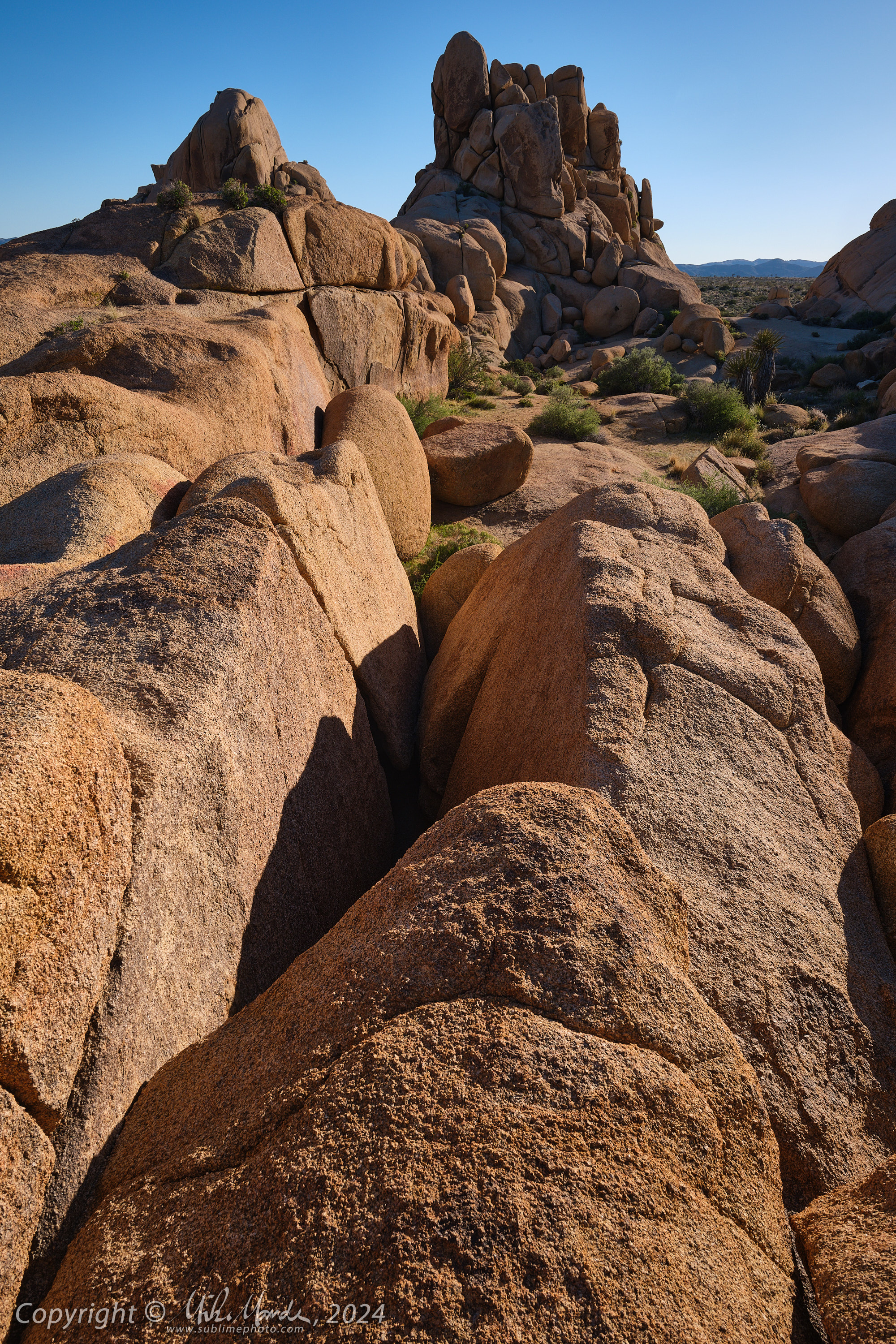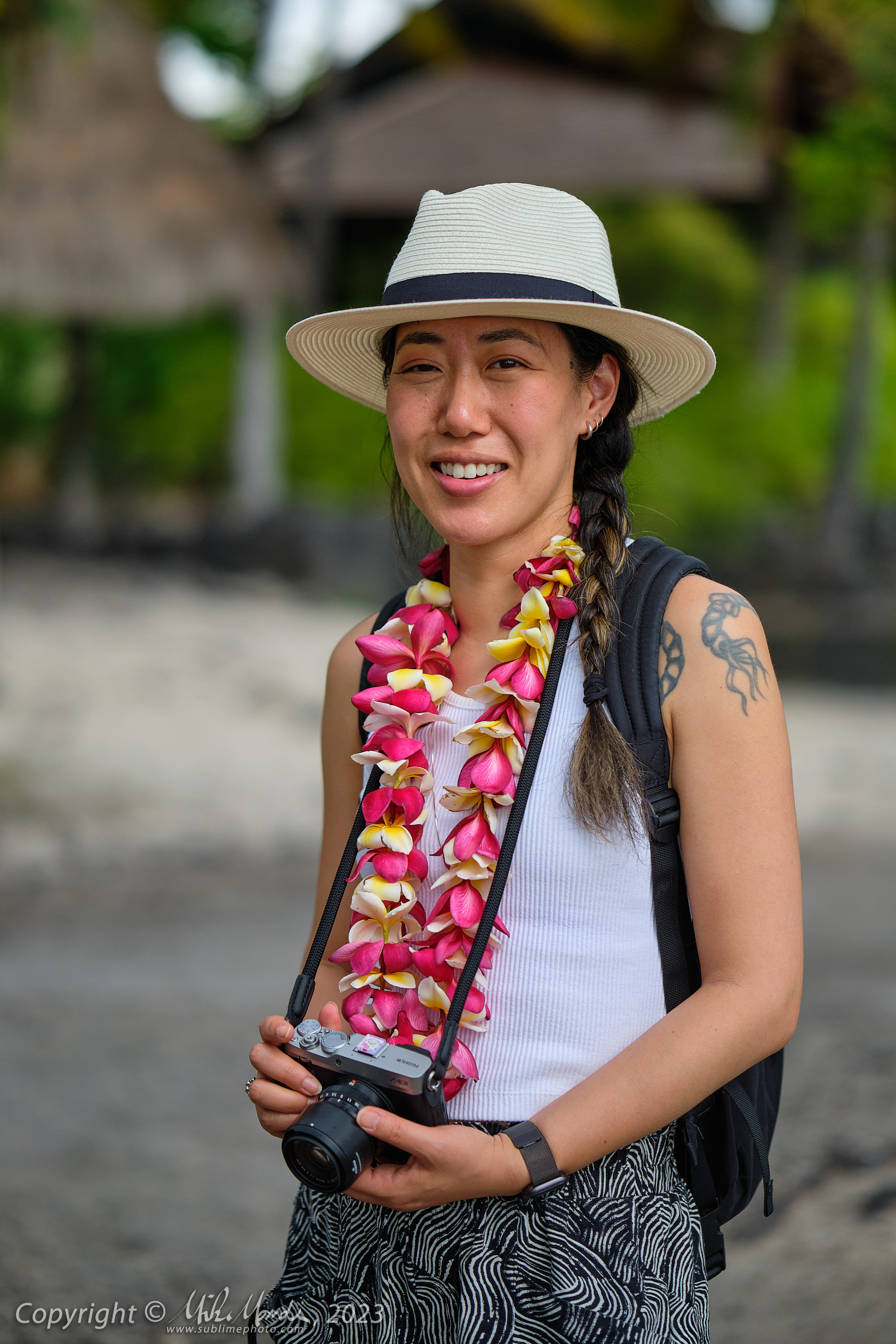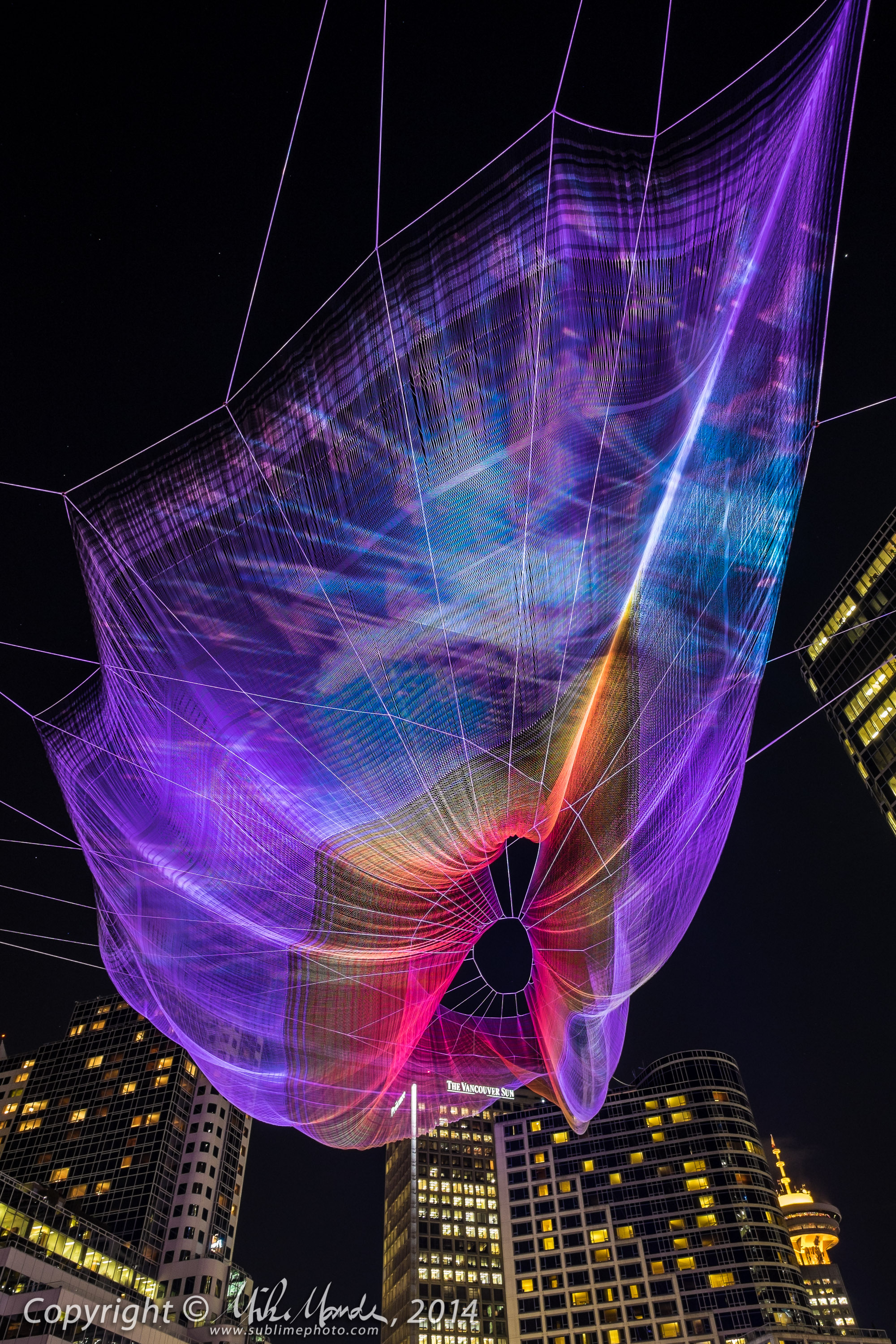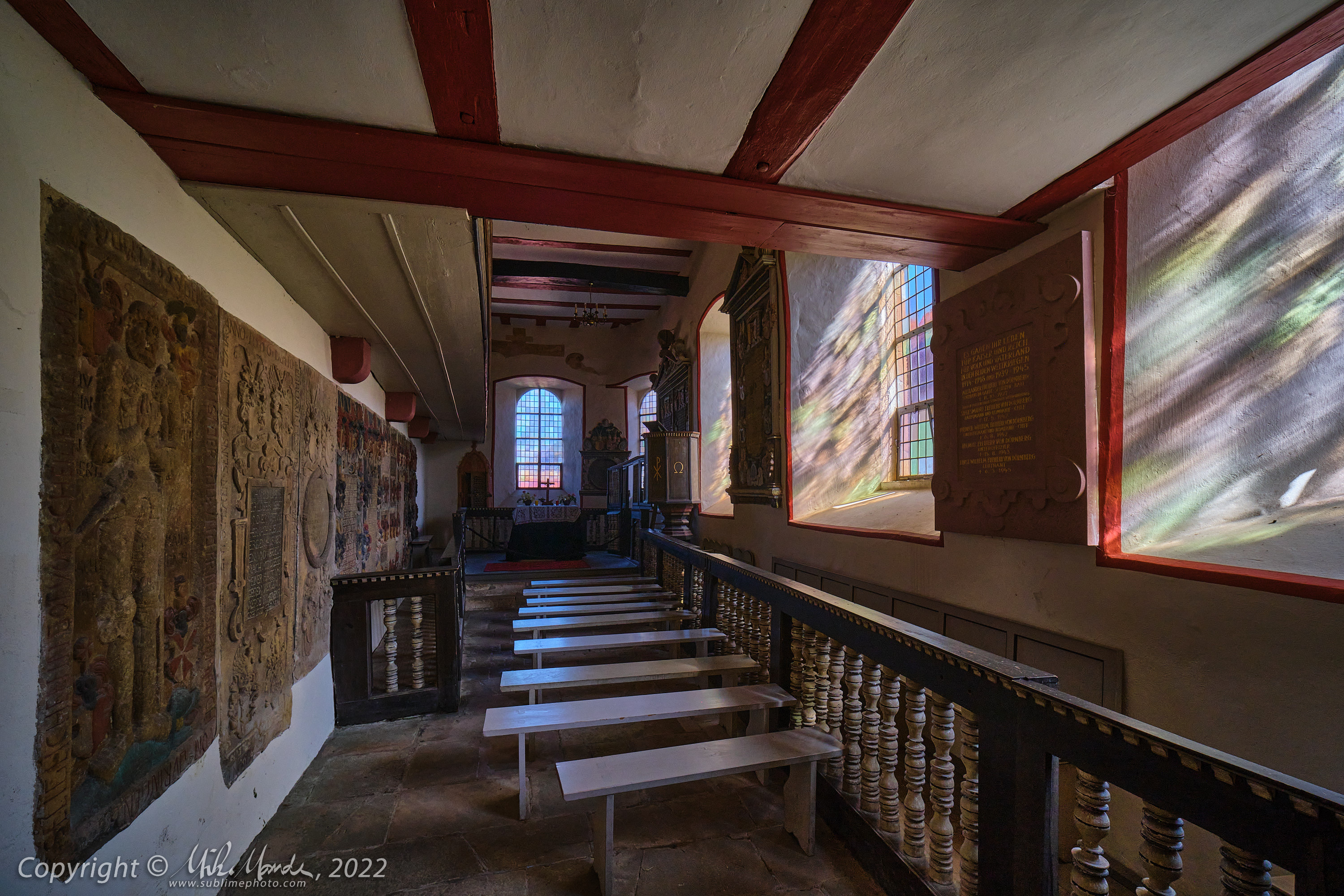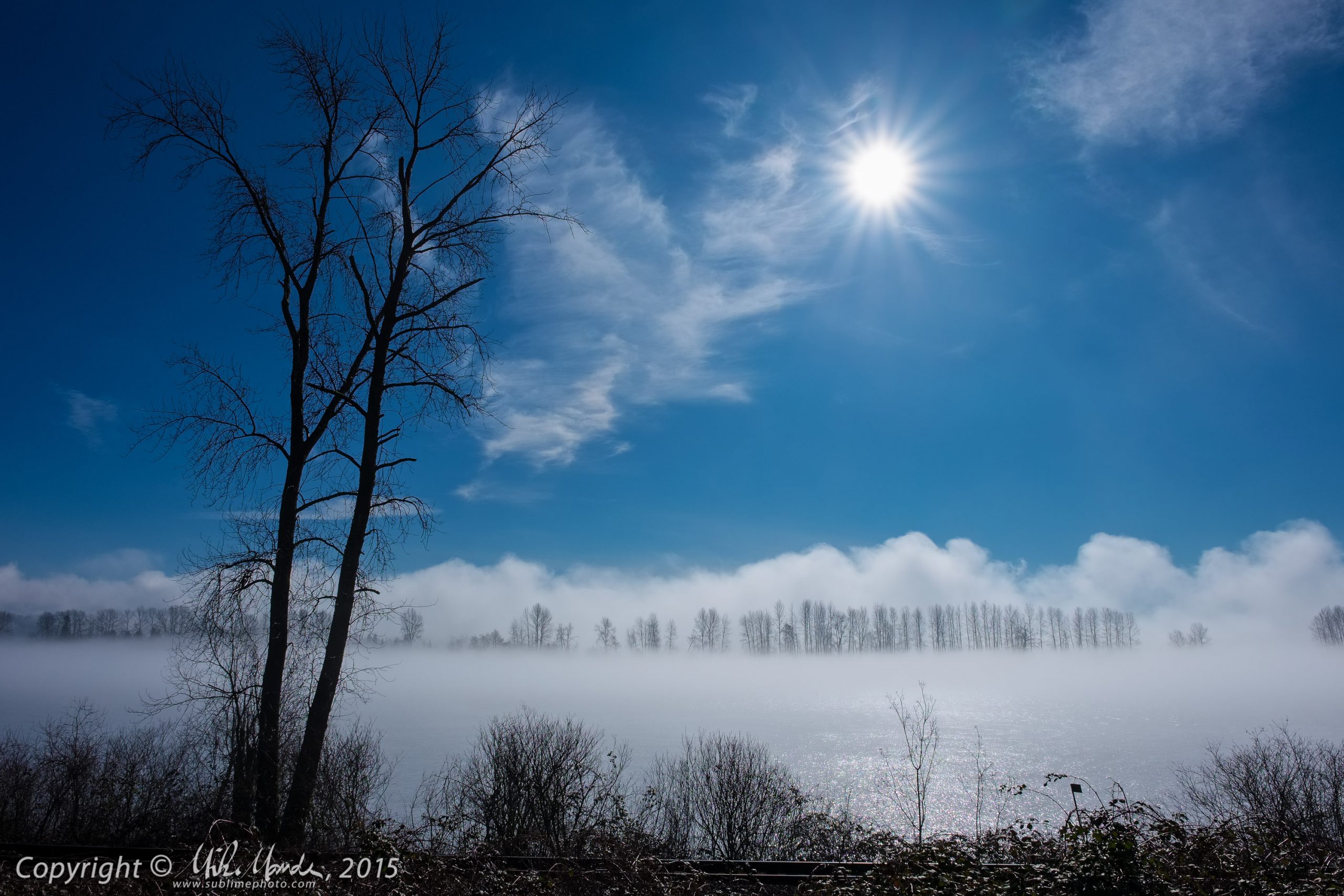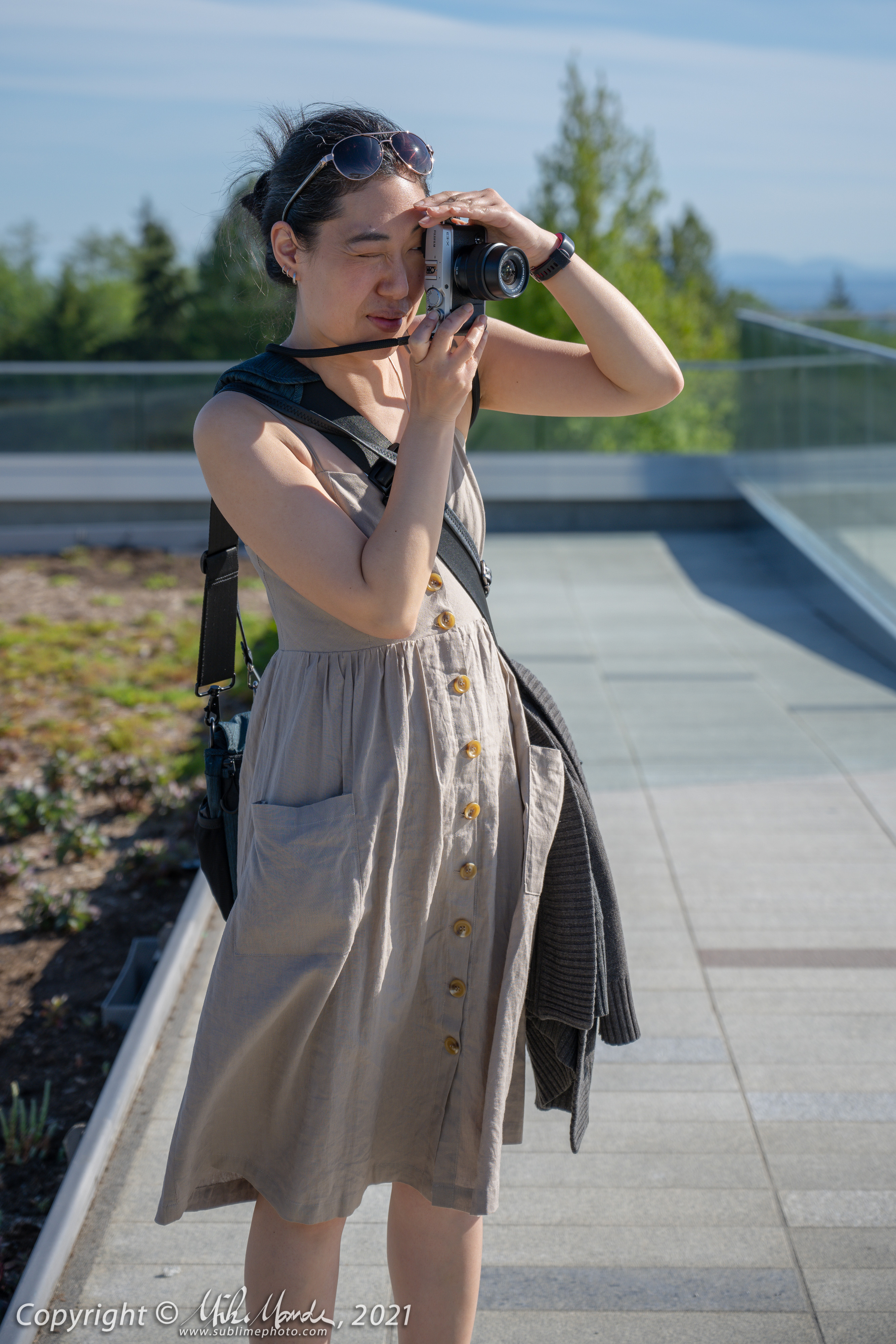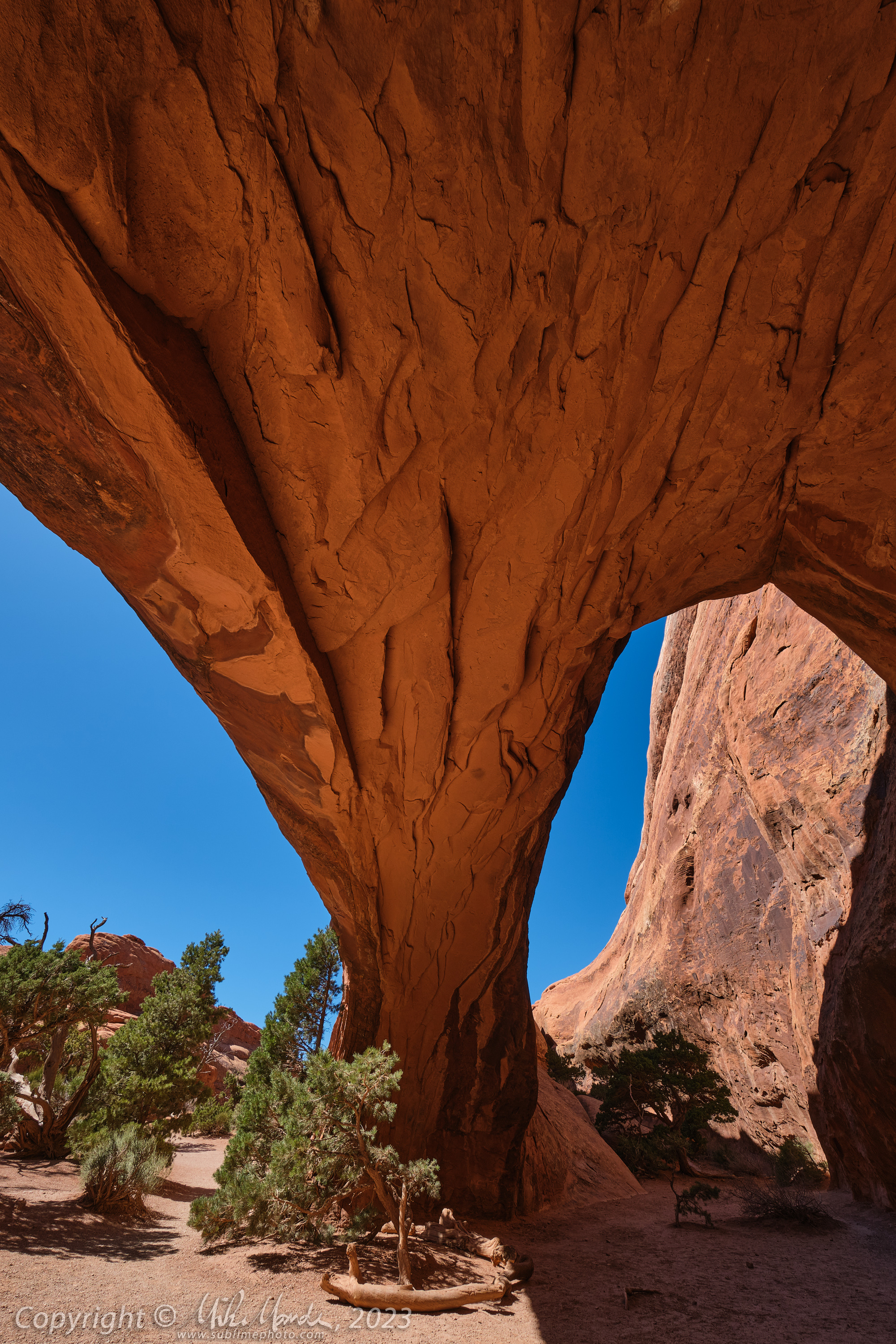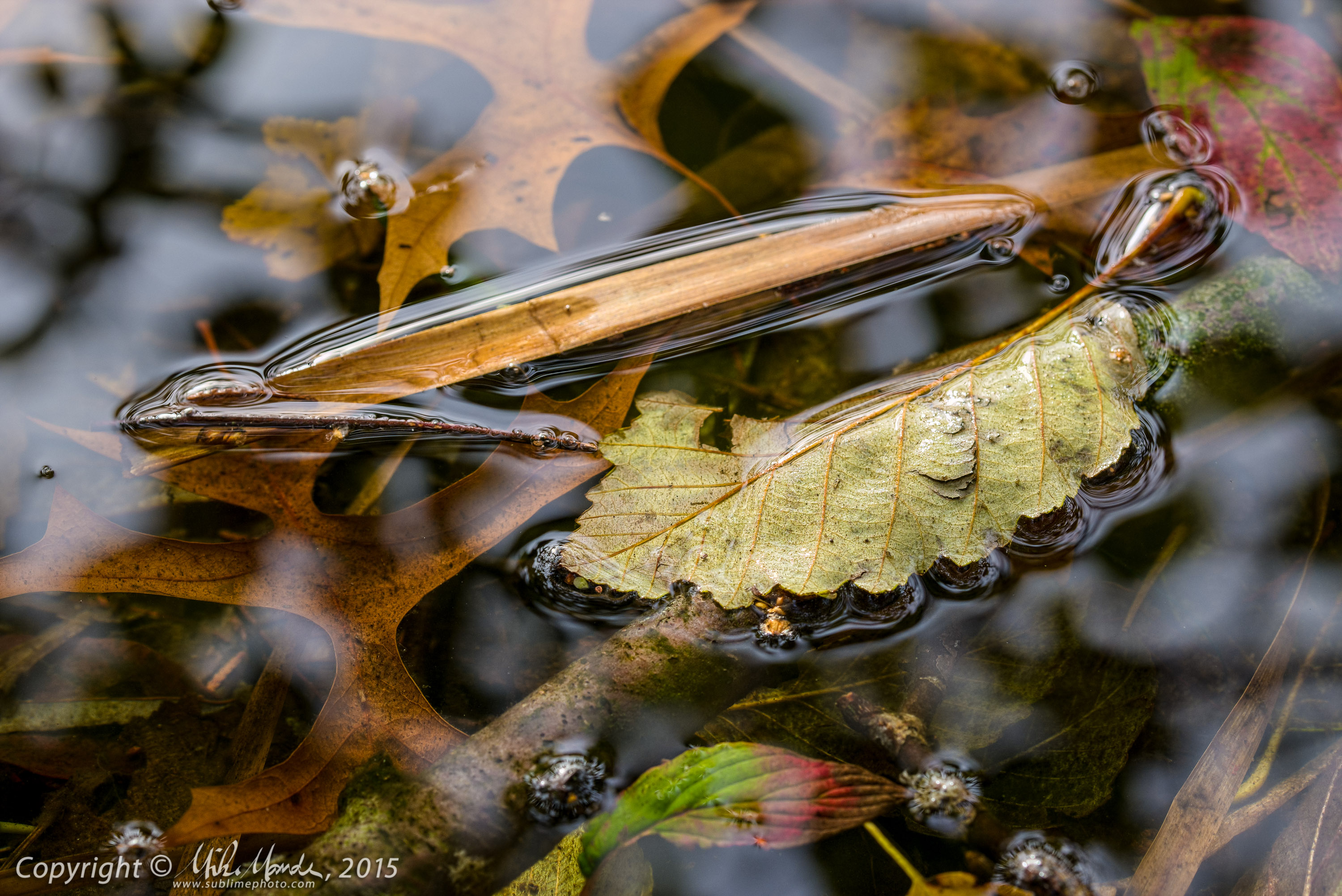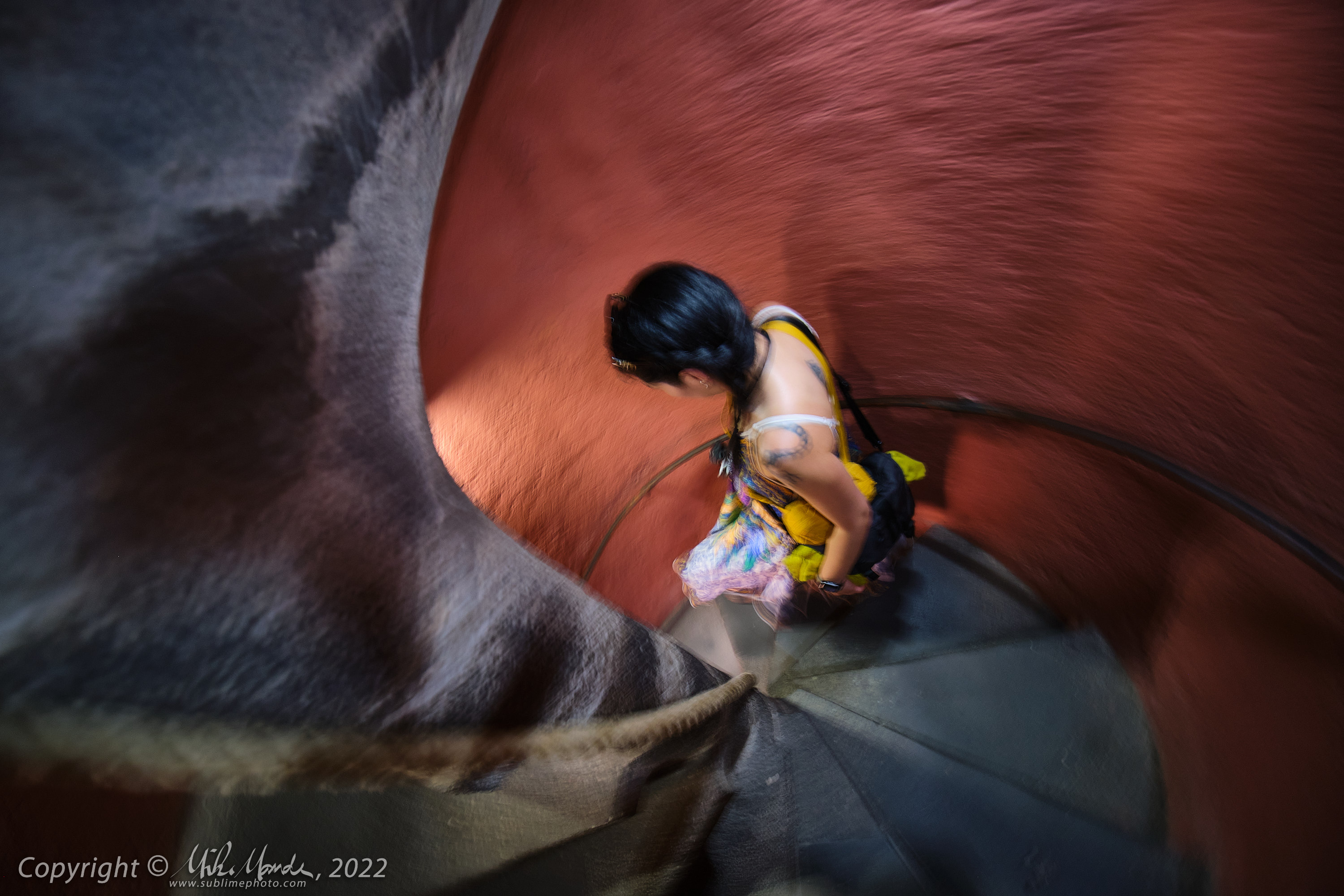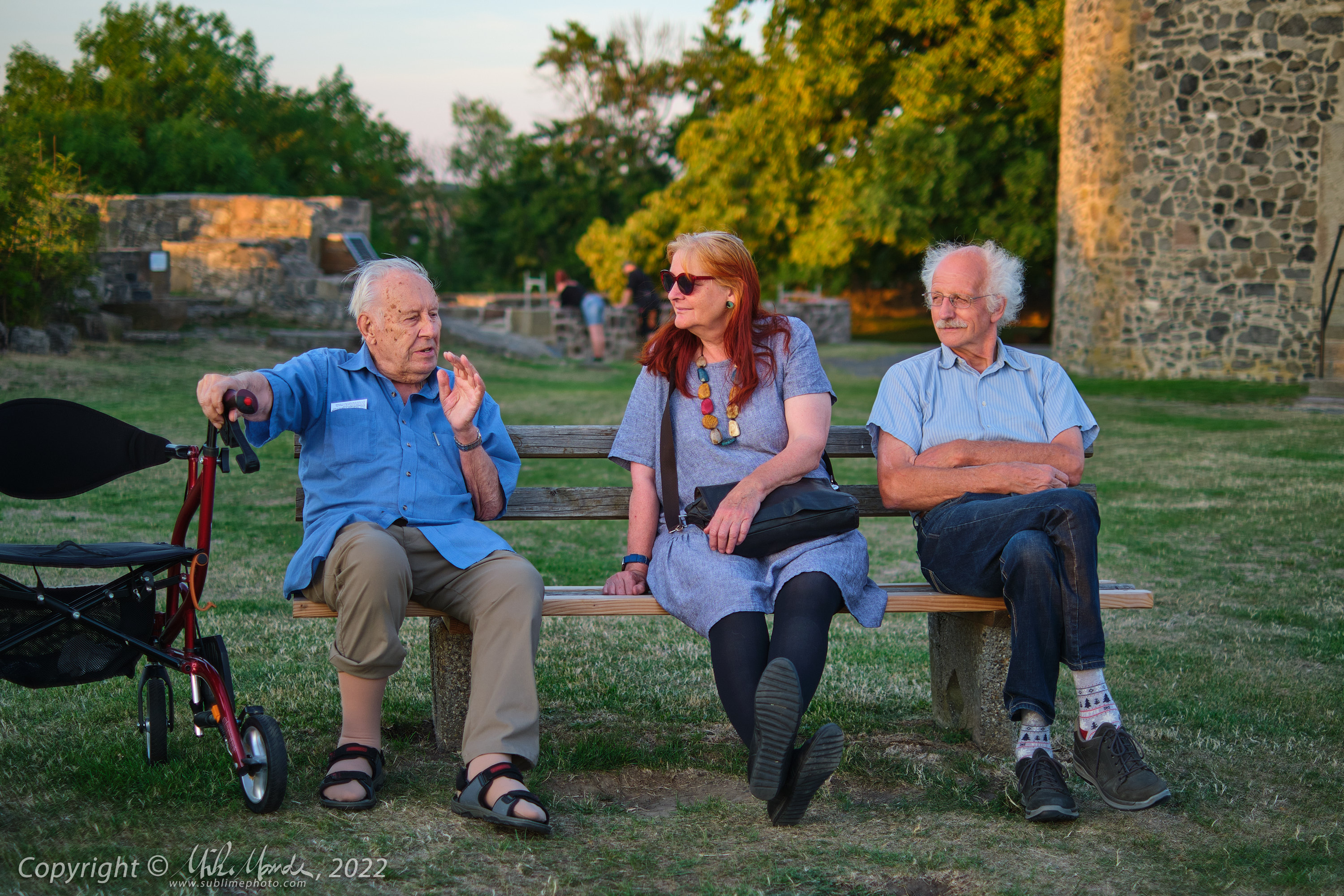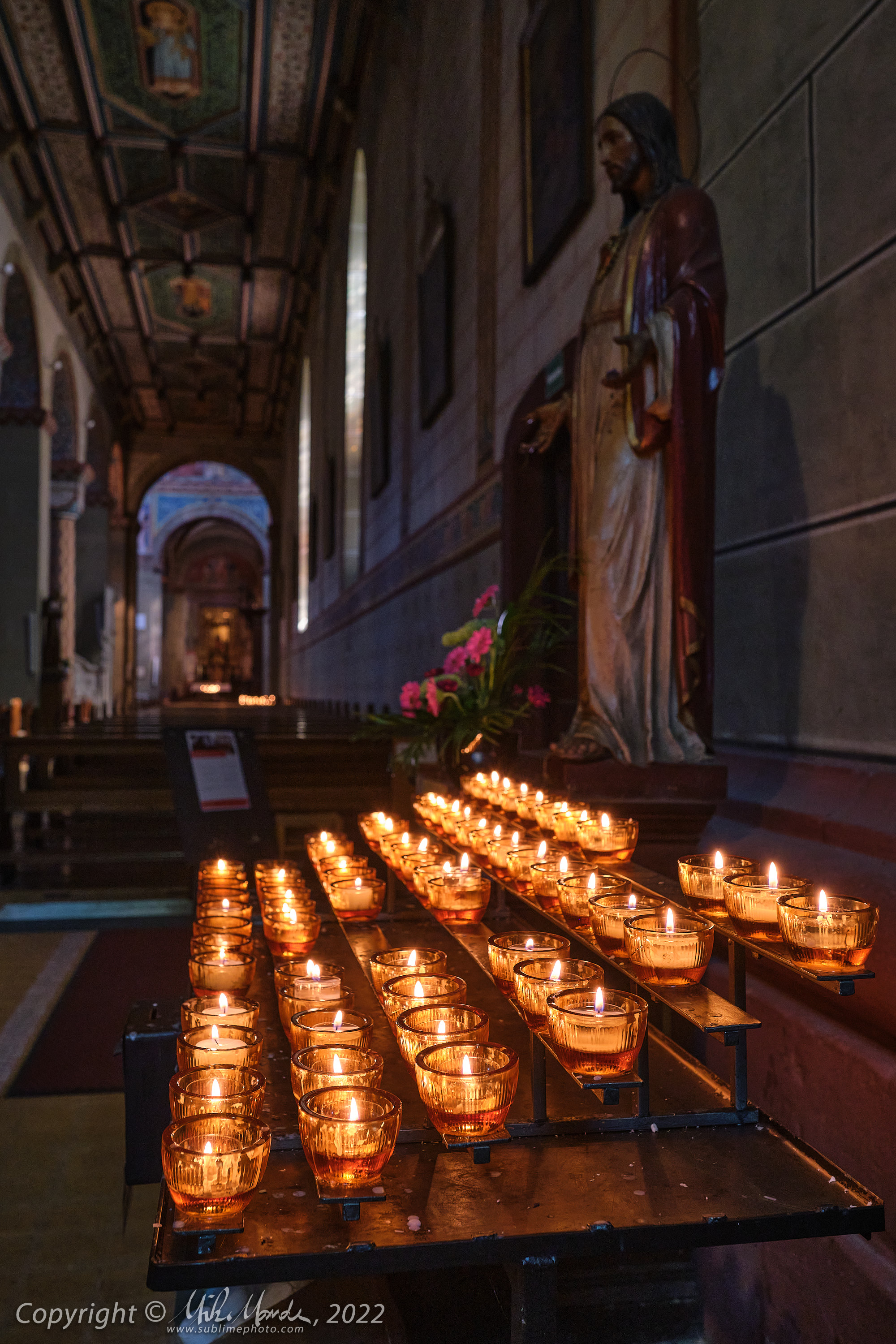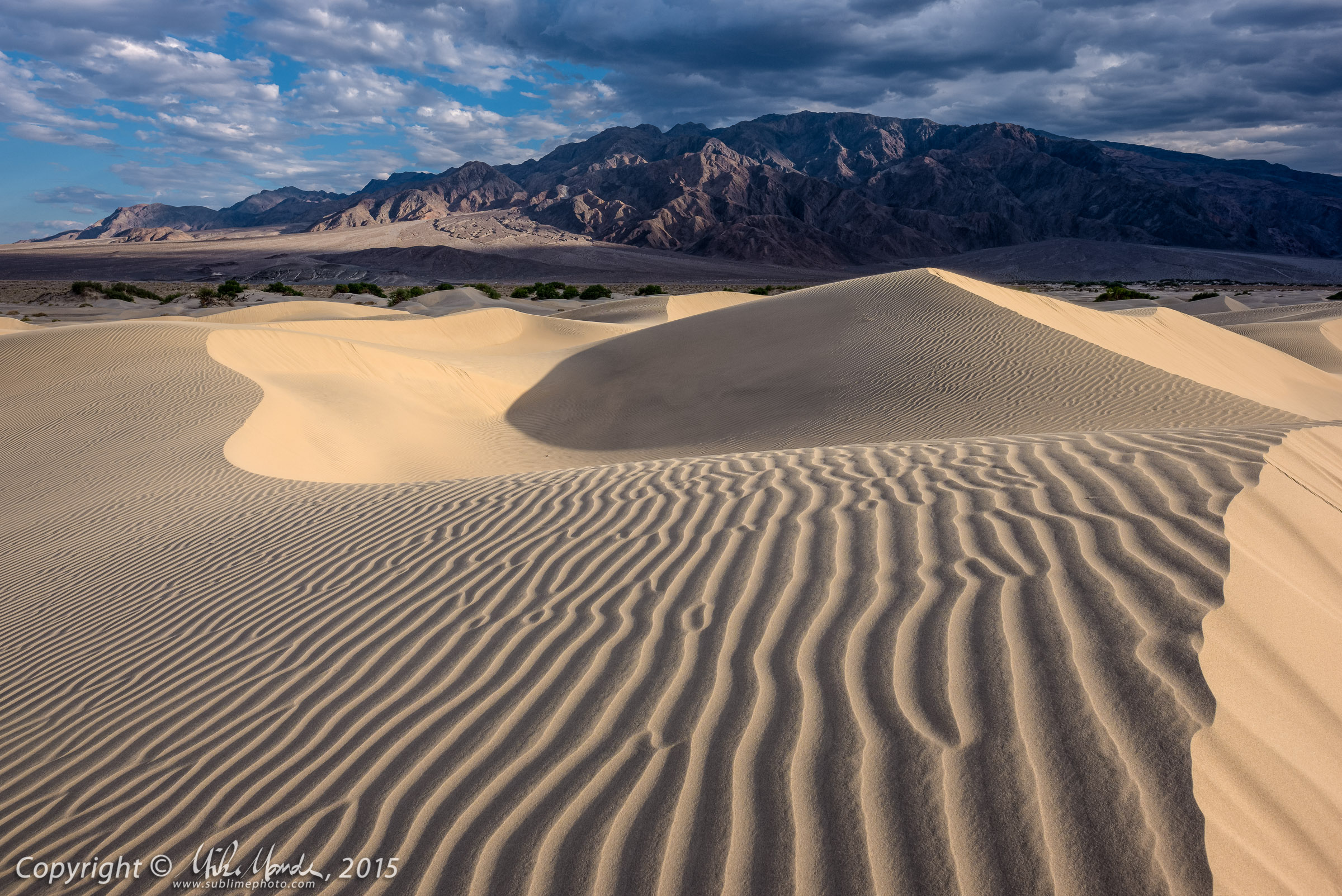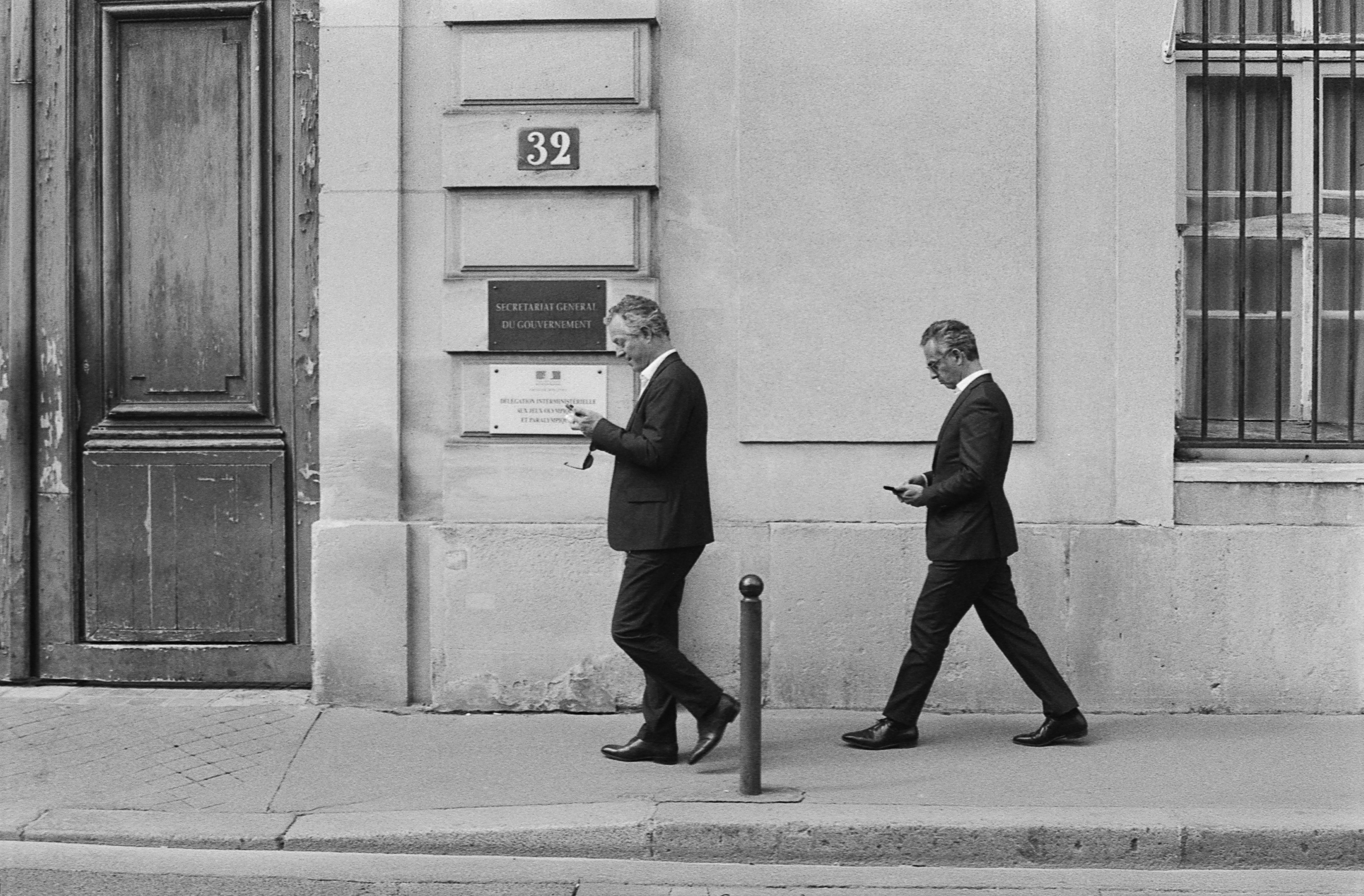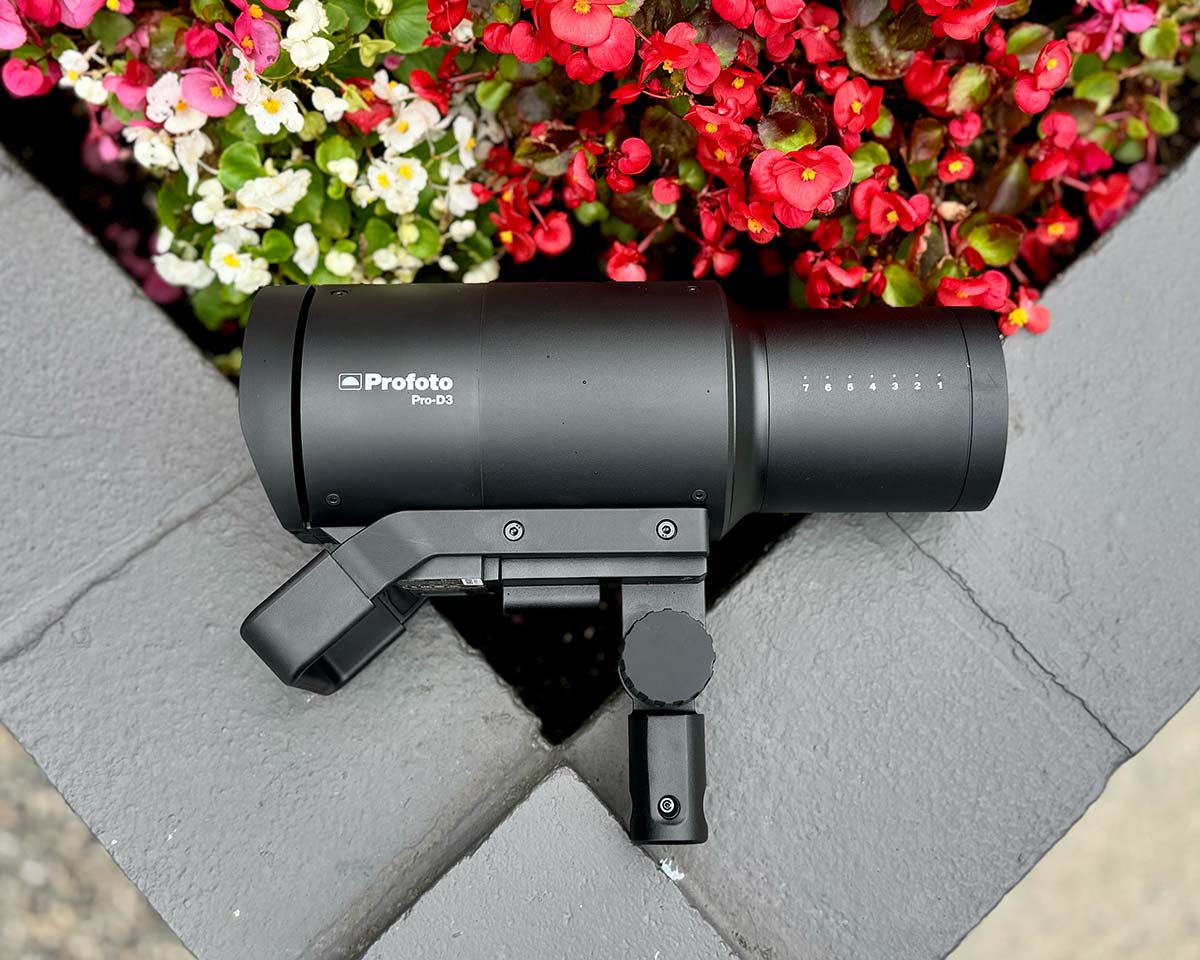Headline image above: Sunrise at Mono Lake, California, Pentax 67II with Pentax 67 SMC 45mm f/4 Prime
At heart, I have always been a prime lens guy, that is, lenses that have a fixed focal length and do not zoom. Even going back to my film camera days, I would generally shoot with primes lenses and only have a zoom lens perhaps for the telephoto end of things. I suppose the one experience which was instrumental in forming my preference for primes early on, was being rather unhappy with a Kiron 35-135mm zoom back in the day. I had this third-party Kiron zoom lens for either my Nikon FE-2, or perhaps it was for my Olympus OM-4… I really do not recall exactly since it was over 35 years ago now! In any case, it had absolutely terrible contrast and flared out badly when there was any bright light anywhere near the front element. It was a reasonably sharp lens if I recall, but for any dramatic shots into the sun, or even pointing loosely towards the sun, I was very dissatisfied with the results. Of course these days, what with people looking for vintage lenses with “character” (which often means flare, aberrations or weird bokeh), it might actually be admired!
On the other hand, during the same time I had the Kiron zoom, I also had a Tamron SP 70-210mm f/3.5 Adaptall mount lens, and it was a fantastic optic back in the day, especially compared to the Kiron. I switched manual focus SLR 35mm film camera systems a few times back in the day, first having a Minolta (X700) back in 1978, then to Nikon (FE2), to Olympus (OM-4) and finally to Canon (T90), and being able to simply buy a new adapter for the manual focus Tamron lens to make it work with a new system was actually very nice! Eventually, I went to an autofocus body with the Canon EOS Elan, and thus needed a whole new lineup of EF lenses. One more switch back to Nikon, with an F3/HP in the late 90’s, would end my 35mm film days before switching to larger formats and then finally to digital in 2004.
Note: Clicking any image below in this gallery will open a larger version in a new window or tab…
While I had my Nikon F3/HP, before my total switch to a medium format Pentax 67II system, I only had prime lenses, with manual focus 20mm, 24mm, 35mm, 50mm, 85mm and 105mm Nikkors, along with a Nikkor AF 180mm f/2.8 as well, which of course had to be manually focused on the F3. For the Pentax 67II, I had multiple Pentax 67 primes, 45mm, 75mm, 135mm macro and 300mm lenses. I was generally very happy with all of the lenses for both the Nikon and Pentax kit. I should add that I also shot with various 4×5 cameras for a number of years and, needless to say, prime lenses were it for those; I only ever had a 90mm and a 210mm.
By the way, the above two film scans (and the Mono Lake headline image) were exported from my Lightroom library in 2014, but both the the Strike Valley, Utah and Mono Lake, CA shots would have been taken in 2002 or 2003, and the cave photo in Oregon likely a few years earlier. The cave shot was a challenge to shoot on slide film (limited dynamic range) since I needed to keep the exposure short (maybe 1 to 2 seconds) to avoid overexposing the lichen encrusted wall which was illuminated by the light reflected from the sunbeam hitting the sand. In addition, immediately prior to the exposure I tossed some sand into the air to give the beam some substance, and then during the exposure I manually popped a flash at the cave ceiling right above me, and my friend Bill simultaneously popped a flash further down the lava tube to give a bit of light there as well. In addition, despite how bright it looks in the photo, trying to accurately focus with the 4×5 ground-glass was near impossible since the rocks were so dark. I ended up using the dot from a red laser pointer to help me focus. I shot a test Polaroid or two to check for exposure (mainly with respect to the flash fill), then only one final shot, if I recall, and it turned out more or less as I had envisioned- yay!
When I got my first DSLR, a Canon EOS 20D back in 2004, and grudgingly sold my Pentax 67II gear, I started using zooms. I worked with an EF 17-40mm f/4L and an EF 70-200mm f/4L IS initially. When I first started shooting with the zooms on my first major photography trip, I had some serious depth of field anxiety! I was so used to shooting with prime lenses that had depth of field scales, that when I started shooting those modern zoom lenses, I really had no idea if I was going to get truly sharp photos. The back LCD on the EOS 20D was tiny and terrible and I didn’t travel with a laptop yet, so I was shooting and relying on experience to get me by on a number of trips down the US Southwest until I eventually bought a laptop. Thankfully, the dramatically greater depth of field an APS-C camera has over a full 6×7 medium format in any given situation, helped me to not mess up the shots in the end. Whew! Shortly after getting the EOS-20D, I also added the Canon EF-S 60mm f/2.8 Macro, and that proved to be a superb, very sharp lens. I also added an ultra-wide, the EF-S 10-22mm f/3.5-4.5 zoom and it was quite acceptable at the time on an 8MP body. I eventually replaced the Canon 11-22mm with a Tokina 11-16mm f/2.8, which proved a much better ultra-wide zoom, and while it was capable of excellent results when choosing the focal length and f-stop carefully, I still didn’t consider it prime lens quality. Still, I got many good shots with it over the years…
As far as image quality, with 8 to 10MP sensors (20D, 30D, 40D), I was pretty darn happy with the zoom lenses early on, especially the 70-200mm – it was great. When I started upgrading to higher megapixel models like the EOS 50D (15 MP) and the EOS 7D (18 MP) over the years, I really started noticing how much better the 70-200mm, and the 60mm macro were, when compared to the wider zooms. With the EOS 7D, I also got an EF-S 15-85mm zoom and while it was actually quite good, a high-end kit lens, it couldn’t match the image quality of the 60mm macro or the longer 70-200mm zoom. Over the years, I had added an EF 24mm f/1.4L and an EF 400mm f/5.6L to my kit (a very good lens) and finally a TS-E 17mm f/4L tilt-shift as well. The 17mm was an absolutely great lens, and by far the sharpest wide angle I had shot with on the Canon system. To me, it was very obvious how much superior the prime lenses I had were to the wider zooms, so I said to myself that in the future, I would focus on expanding my kit with primes.
When Nikon came out with the D800 DSLR, the megapixel count and the truly ground-breaking dynamic range drew me in and I switched from Canon to Nikon. With the Nikon, I ended up with a Nikkor AF-S 16-35mm f/4G VR on the ultra-wide end and an AF-S 70-200mm f/4G VR on the long end, but in between a bunch of Nikkor primes with an AF-S 24mm f/1.4G, an AF-S 35mm f/1.4G, an AF-S 60mm f/2.8G Macro and also an AF-S 85mm f/1.8G. Once again, apart from the 70-200mm, the ultra-wide zoom was competent yet uninspiring, and all the prime lenses proved vastly superior. When I looked at shots taken with the prime lenses, I was often very happy with the results, but with the zoom, my reaction was often “Meh, not bad I guess.” I wasn’t even particularly happy with their flagship AF-S 14-24mm f/2.8G when I tested it, since it suffered from as lot of flare and was big, heavy and expensive, and it couldn’t take filters without a very expensive (and bulky) accessory drop-in filter holder. I couldn’t bring myself to spend the money, nor carry such a beast of a lens, if I wasn’t blown away by the results.
I did find a slightly better ultra-wide in the Nikkor AF-S 18-35mm f/3.5-4.5G. It was technically a consumer lens, not a pro lens, but it was actually better than the 16-35mm f/4G in most ways. I didn’t miss the narrower zoom range really, since I treated the 16-35mm as an “18-28mm” anyway, due to its image quality suffering at either end of its zoom range. The new 18-35mm was also quite flare resistant as the photo above shows. As much as it was a very good zoom for the money, ultimately it still didn’t quite have the same image quality as the likes of the 24mm or 35mm f/1.4G for example, especially at wider apertures.
So finally, that brings me to my current system, where a Fujifilm X-Pro2 is my main camera now. I had the Nikon D800 kit, and at the same time also a Panasonic kit with mostly zooms (GH2, GX5 and IR converted GF2), and when the Fujifilm X-E1 came out, I started putting a Fujifilm kit together as well. The first real revelation was the Fujinon XF 14mm f/2.8R. This lens, equivalent to a 21mm on full frame, was amazingly sharp, very consistent edge to edge, flare resistant and had virtually zero barrel distortion. It was far superior to any other lens near that focal length that I had shot with, save for the big, heavy and expensive Canon 17mm tilt-shift. Yep, that 17mm was a fantastic lens.
I also had the XF 23mm f/1.4R, and both it and the 14mm far outperformed the equivalent focal lengths I had in my Nikon kit. While the 36MP D800 certainly out-resolved the 16MP X-E1 in the central part of the frame of wide angle shots, there was always a noticeable drop in corner sharpness on the D800. Even my expensive AF-S 24mm f/1.4 wasn’t perfect that way. When I did some tests at Succor Creek, Oregon, at the tail end of a trip to the Southwest, where the Fujifilm kit was along mainly as a backup, and compared the 16MP Fujifilm shots to the 36MP Nikon shots, the Fujifilm wide angle glass actually gave me better looking 24×36 inch prints as far as corner to corner consistency. And yes, that from only 16MP images. Here is a shot from the same area, taken a few years later…
For my trip south the next year, I decided to leave the Nikon gear behind and only traveled with my Fujifilm kit, after adding a few more lenses. I was nervous about leaving my “pro camera” at home, but was very pleased with the results in the end, and didn’t miss the big Nikon at all. A couple of years later, I decided to downsize from three complete systems to one, and sold off all my Nikon and Panasonic gear. When I looked at my Lightroom library and saw how little I was using the Nikon and Panasonic gear, almost always grabbing the Fujifilm kit when heading out to shoot, I decided it was time to take the plunge and sell off the gear I was no longer using.
I will say this: had Nikon already released their mirrorless Z-system, with its wonderful array of reasonably compact, quite affordable and superb f/1.8 prime lenses, I likely would have remained a Nikon shooter. However I switched to Fujifilm a few years before they released their Z-system, but I have to say that of all the full-frame mirrorless systems, Nikon’s lens lineup appeals to me the most. However, I don’t regret switching to the Fujifilm X-system at all, and have really grown to appreciate the shooting experience, the smaller, lighter bodies, as well as the absolutely superb lineup of prime lenses that are available.
To me, Fujfilm’s APS-C crop sensor cameras are not a step down from full-frame, since I enjoy the additional depth-of-field I can get from the smaller sensors for my landscape photos (see above for example), and with a lens like the 56mm f/1.2, I am more than happy with that system’s subject isolation capabilities, and don’t pine for anything with a shallower depth-of-field (see below). For my style of shooting, I’d say that APS-C is actually the optimal format…
I have now fine tuned my prime lens selection a few times, and have settled on a range of lenses that will likely be my long term kit, save one perhaps. Currently, I am shooting with a Fujifilm X-Pro2 as well as an infrared converted X-E2 and my Fujinon lenses are as follows: XF 8mm f/3.5 (rectilinear, not fisheye), XF 14mm f/2.8, XF 18mm f/1.4, XF 23mm f/2, XF 35mm f/1.4, XF 56mm f/1.2 (new version) and for a longer zoom, the XF 55-200mm. For those of you more used to thinking in terms of full-frame focal lengths, that equates to 12mm, 21mm, 28mm, 35mm, 50mm (approx), 85mm and 80-300mm (approx). As far as the primes, I probably can shoot 98% of what I do with them and very rarely use longer telephoto lenses. The one lens I may swap out, but it is not a priority, is the XF 35mm f/1.4 R, replacing it with the new XF 33mm f/1.4 R LM WR. The new 33mm outperforms the older 35mm at the widest f-stops, is weather sealed and has internal focusing, all of which are appealing. However, stop the lenses down a little and there is little difference between them, so I haven’t bothered with the switch just yet…
In the past, I also had a 16mm f/1.4, a 23mm f/1.4, a 50mm f/2 and a 90mm f/2, as well as a manual focus Laowa “Zero-D” 9mm f/2.8, and all of those lenses were exceptional as well.
On the other hand, I went through a number of wide-angle and mid-range zooms with my Fujifilm system, including the Fujinon XF 10-24mm f/4, a few XF 18-55mm f/2.8-4 kits lenses (kept selling them in anticipation of a new upcoming mid-range zoom but was disappointed a number of times and re-purchased the 18-55mm!), and tested out the XF 8-16mm f/2.8, the XC 15-45mm, the XF 16-55mm f/2.8, the XF 16-80mm f/4, the XF 18-135mm f/3.5-5.6 as well as the brand new XF 16-50mm f/2.8-4.8 R LM WR recently. Especially with the mid-range zooms, I was desperately trying to find something better for my needs than the highly regarded 18-55mm kit lens, but until the brand new Fujinon XF 16-50mm came along, I was ultimately disappointed with all of them for various reasons. I won’t bore you further with the details of all those reasons, but if you are interested then by all means, contact me and ask! Not that some of the zooms didn’t have some good qualities, like the Fujinon XF 16-55mm’s incredible flare resistance and contrast, even when shot right into the sun…
In a nutshell, I was trying to find prime lens quality in a relatively compact zoom, and none of them quite cut the mustard. I will say that the brand new 16-50mm kit lens, replacing the venerable 18-55mm, has come the closest to prime lens quality in a number of ways. I am actually extremely impressed with it, especially for its tiny size and modest price, and at some point I may decide to pick one up to have a walk-around zoom. In the end, I still think I’d resort to my prime lenses for any serious shooting, but sometimes it would be nice to have a truly competent mid-range zoom, one I can shoot at any reasonable f-stop at any focal length, and not be disappointed in the edge to edge image quality!
I should mention that other manufacturers (Canon and Nikon for example) do have a number of ultra-wide and mid-range pro-level zooms that are exceptional, but almost without fail, those lenses are all rather large, heavy and quite expensive. I am not trying to say it is impossible to find good mid-range zooms, rather that I appreciate excellent image quality and prefer smaller, lighter primes. Even if I had a full-frame Canon or Nikon system, I would very likely try hard to complete my lens kit with primes instead of zooms. One notable exception for a current model mid-range full-frame zoom that is compact and lightweight with great image quality, good enough that I’d be happy with it, is the Nikkor Z 24-70-mm f/4 S. To me, that lens would be a no-brainer purchase with a Z system body when getting into the system, even if you do decide to get the f/2.8 version down the road as well, since the f/4 makes for a wonderfully compact and lightweight kit. Even though it’s not an f/2.8, it can still do a decent job of isolating your subject if you aren’t carrying a dedicated portrait lens…
Apart from often better image quality, prime lenses can force you to rethink your composition too, to look at differing perspectives and so on. Too often when you have a zoom attached to your camera, you see a shot and stop, put the camera to your eye, adjust the zoom until you have the framing you like, and take the shot. With a prime lens, you might not quite be happy with the framing after you stop and look through the viewfinder. So, rather than change to another prime immediately (it does take a moment to do so), you might decide to step back a bit, or to move in closer to your subject, maybe move left or right to exclude a distracting bit of peripheral detail, and all this shuffling about, bobbing up and down etc., might result in a different and perhaps superior perspective on your subject. In other words, sometimes one can get lazy with a zoom lens and not be as creative as one would be with a prime. Here’s a shot while lying on my back under Navajo Arch in Utah…
A prime lens can also be more rugged since often a zoom lens will extend as you change the focal length and that zoom mechanism can be a bit delicate and easily damaged with a modest impact. I would also think that weather sealing on a prime might often be better, since a zoom needs to move smoothly and I’d suspect that weather sealing on the sliding zoom mechanism might be a little less reliable? That is another reason I like the new Fujinon XF 16-50mm: its zooming and focusing is entirely internal, so it does not extend as you vary its focal length. It certainly feels more rugged than the older 18-55mm because of that, and of course the new lens is weather sealed too. Finally, when you stop down a lens with the intention of capturing bright point light sources as starbursts, or in the case of the sun, a sunstar, often (but not always) a prime lens will render a more pleasing starburst. For example, as nice a lens as the Nikkor AF-S 18-35mm I spoke of above was, it created truly horrible starbursts.
In any case, I have certainly gotten many good shots with zoom lenses over the years, but ultimately my heart lies with primes. I’d be curious to hear other opinions in the comments… are you fond of primes or zooms? I am sure there are many diverse opinions!
I will end this posting with a few more prime lens photographs… and I’ve hope you’ve enjoyed reading about my lens journey! You’ve also now read about a large part of my overall photographic history, at least as far as equipment is concerned…



